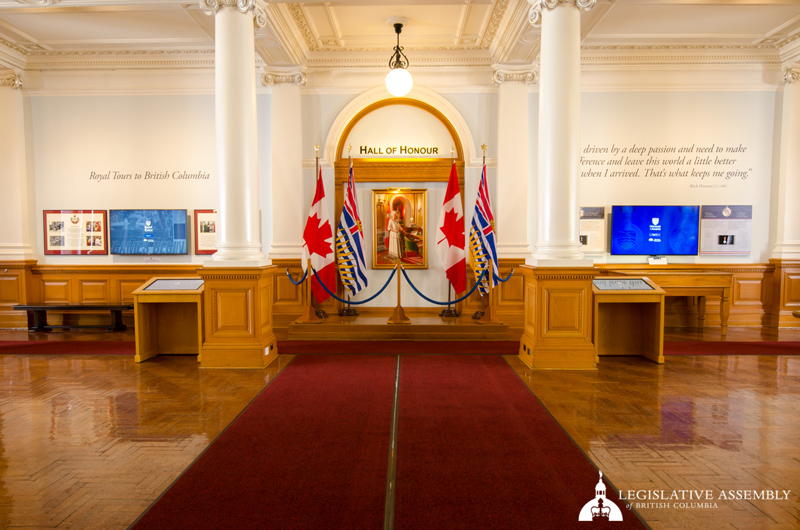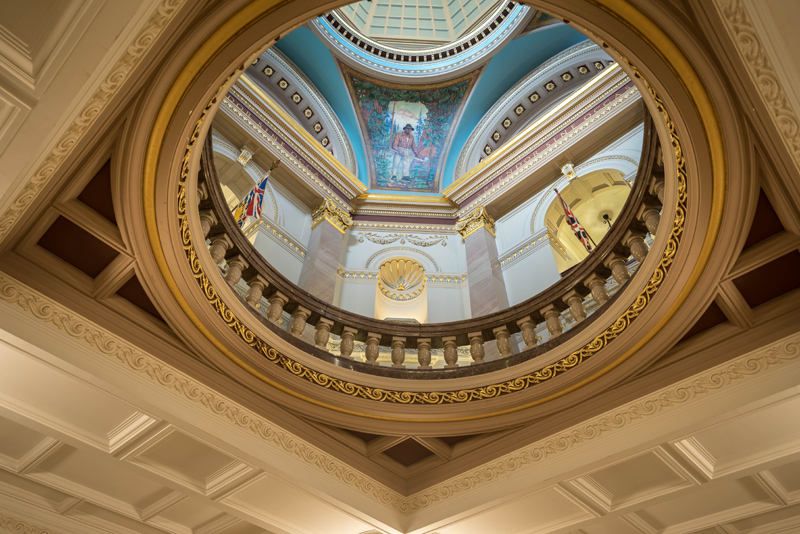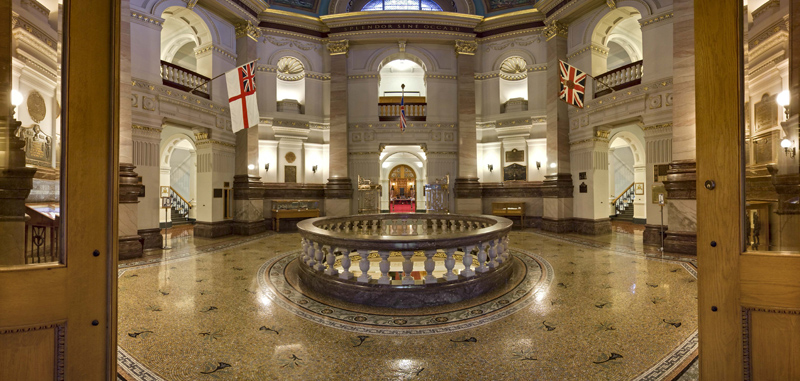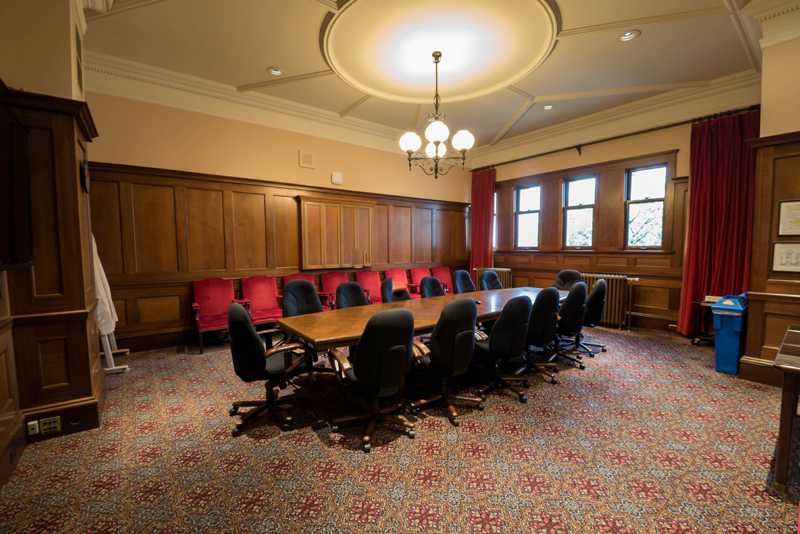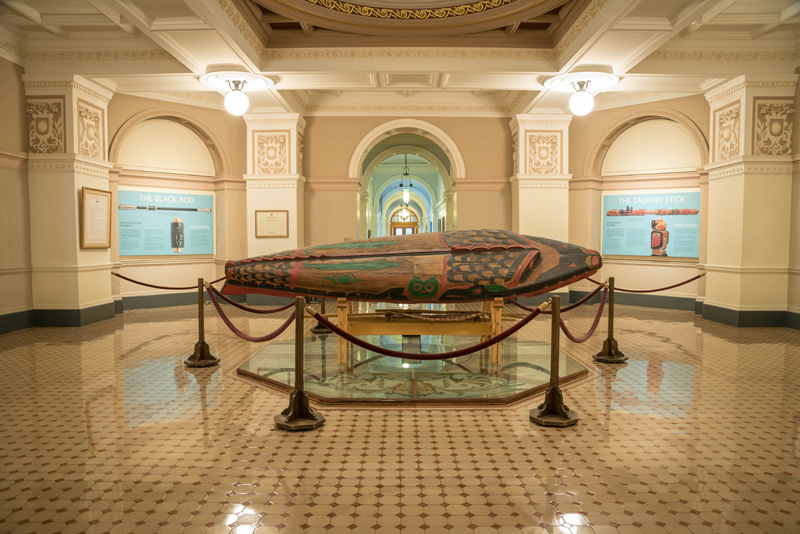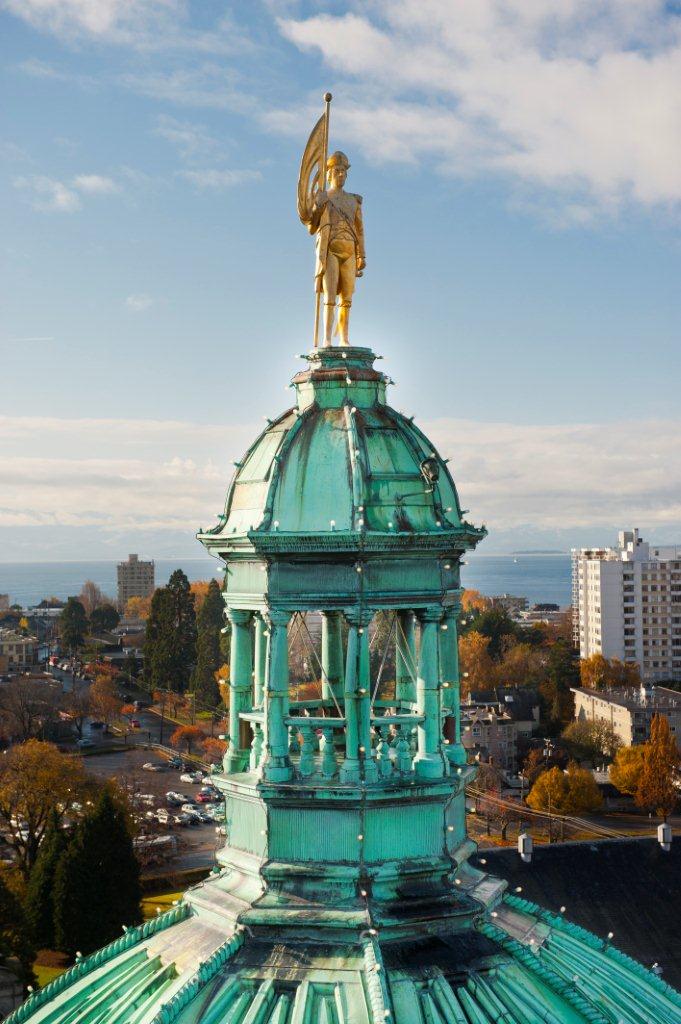Architect Francis M. Rattenbury’s design was not only a success because of the grand scale and proportion of the exterior, but also for its ability to blend symbolism and purpose with the interior of the Parliament Buildings. Originally, the Parliament Buildings had two distinct roles: as the seat of democracy as embodied in the Legislative Assembly and as the centre of the daily work of government. Rattenbury was able to combine these two very different functions in a complementary and practical way.
As the home of the Legislative Assembly, the Parliament Buildings need to serve as a symbol of the strength and tradition of parliamentary democracy. It also needs to provide an appropriate setting for the law making functions of the Legislative Assembly.
Rattenbury’s Parliament Buildings are centred on the rotunda. The main dome is directly over it, and the Ceremonial Entrance under the main archway leads to it. The Upper Rotunda leads to the Members' Lobby that serves as the antechamber to the Legislative Chamber. Its extraordinary decoration of marble and gilt plasterwork is matched only by the ornamentation in the Chamber itself. The dome, stairs, and rotunda all lead to the Chamber and remind us of its primary importance.
The Parliament Buildings also serve as the seat of government. Although the terms of the architectural competition allowed for it, Rattenbury chose not to have a separate administrative building. Instead, he incorporated a functional office building for government within a symbolic and ceremonial parliamentary building.
In the original plan, the Lower Rotunda was intended as the central access point for all government services of the day. A citizen could go from here directly to any government department. Just as the Upper Rotunda leads directly to the Legislative Chamber, the Lower Rotunda was designed to lead directly to government. Likewise, just as Rattenbury wanted to use the finest decorative materials worthy of a parliamentary institution, he was equally careful to make sure that the Parliament Buildings had the most modern facilities of the 1890's to ensure that the most efficient government services were available to the public.
Rattenbury's original sketches for the Parliament Buildings featured a gold statue of Britannia - the female personification of Britain - atop the main dome where Captain George Vancouver now stands.
